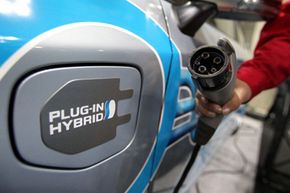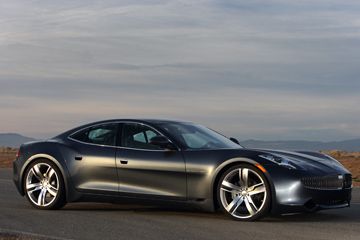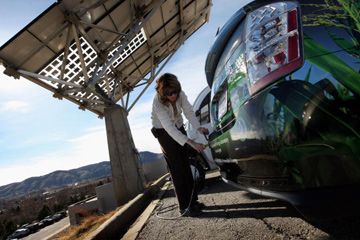Charging plug-in hybrids on a smart grid is more than the simple transmission of power to the car's battery pack when needed. If plans pan out, and plug-in hybrids catch on, the grid and the cars could work in tandem easing the ebb and flow of power in the grid by alternately storing power and supplying power as needed.
PHEVs offer the best of two worlds -- the economy of an electric vehicle and the oomph of a gas engine. More importantly the car can shift between the two fuel sources -- gas and electric -- as needed, or as wanted. It's this last ability, the "as wanted" part, where PHEVs really shine. The owner can choose between the least expensive fuel, or a combination of the two, and save money in the long run. And that same gas engine can even recharge the batteries, or act as a generator on a smart grid if commanded to turn on.
Advertisement
However, while the technology is largely present to make the partnership a reality it has yet to be standardized or refined. Added to this is the push for all-electric vehicles over hybrids.
Yet the combination of PHEV and smart grid offers a glimpse of an intriguing future and one which could become viable.
Let's plug-in and look at what happens.
Generally your car's battery pack would be charged overnight, likely on a Level 2 system, when demand for electricity is lowest, as well as cost. Most estimates put the cost for electricity during this period, on average, as roughly the equivalent of $1 per gallon.
You drive to work, plug in at a charging station, and top off for the ride home. Once home, plug in again and be ready for the morning.
The advantage of a smart grid comes in when a normal day, from an electrical stand point, is no longer normal.
Imagine temperatures have climbed well into the 90s. Grid operators know there will be huge demand for electricity and prices will spike. The grid sends a message to your car, using wireless technology or "talking" over the power lines, telling it to use gas instead of electricity on the commute since electricity will be more expensive. The car gets the message then tells you when you get in and start it.
You arrive at work and demand is still high. You plug in and the grid sucks your battery dry to help meet demand. Don't worry; it's doing the same thing to all the other battery packs it can access as well. The amount of electricity it uses is credited to your account.
By mid-morning the peak is over and the grid starts recharging your batteries. By the time you leave for home the commute can be accomplished without gas.
Before any of this becomes a reality, however, more PHEVs and all-electric vehicles need to populate the roads. One of the ideas behind PHEVs on the smart grid is to use the cars as mobile battery sources. The more sources there are the more variability they offer, and the more users using the system.
Marc Geller, co-founder of Plug In America, an electric vehicle advocacy group, said much of the technology exists to charge electric vehicles effectively and prudently from the existing grid. Instead plug-in hybrids and electric vehicles are seen as the best place to push a smart grid into existence, whether it's time for one or not.
But the impetus is there and electrical utilities and auto makers are experimenting with smart grid technology as well as the one technology that may make it all happen -- the charging station.
Advertisement



